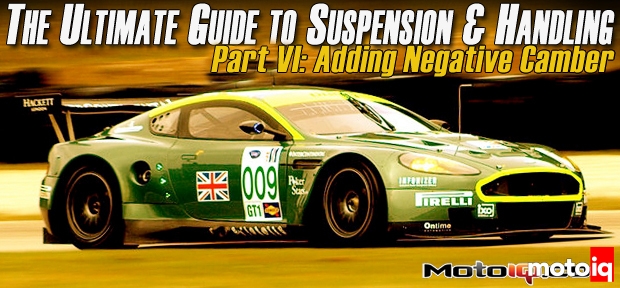,
 |
| Adding negative camber will increase the height of the slip angle curve and extend the point where cornering force rolls off to the right. |
Your car and your driving demands together determine how much negative camber you need. Aggressive drivers should use more. Those concerned about tire life while commuting should use less. Even though their sport involves sliding the car, many top drifters also prefer road racing type camber settings to get the best balance and most even wear from their tires. Suspension design also matters. McPherson strut cars need more negative camber to work well under cornering load; unequal length A arm and multi-link suspensions generally need less negative camber. Softer suspended cars that lean over in turns generally need more negative camber to grip well.
 |
| A 3D example of the tire distortion present under lateral loading. The forces generated are quite large. Negative camber can overcome much of the bad effects caused by this distortion. |
The following table provides a rough guideline of how much negative camber to run based on your driving style, keeping in mind that tire wear matters. Surprisingly, the baseline settings are roughly the same for all typical chassis layouts, front engine front-wheel drive, front engine rear-wheel drive, front engine all-wheel drive, and mid engine rear wheel drive.
Driving Use | Front | Rear | ||
Multi Link/Unequal A-Arm | MacPherson Strut | Multi Link/Unequal A-Arm | MacPherson Strut | |
Aggressive Street Driver | -1.5-2 | -1.75-2 | -0-1 | -0.5-1 |
Weekend Hot Lapper | -1.5-2.5 | -1.75-3 | -0-1.5 | -1-1.5 |
Racer Only/ Serious Drifter | -2.5-4 | -3-5 | -0-2 | -1-2.5 |



